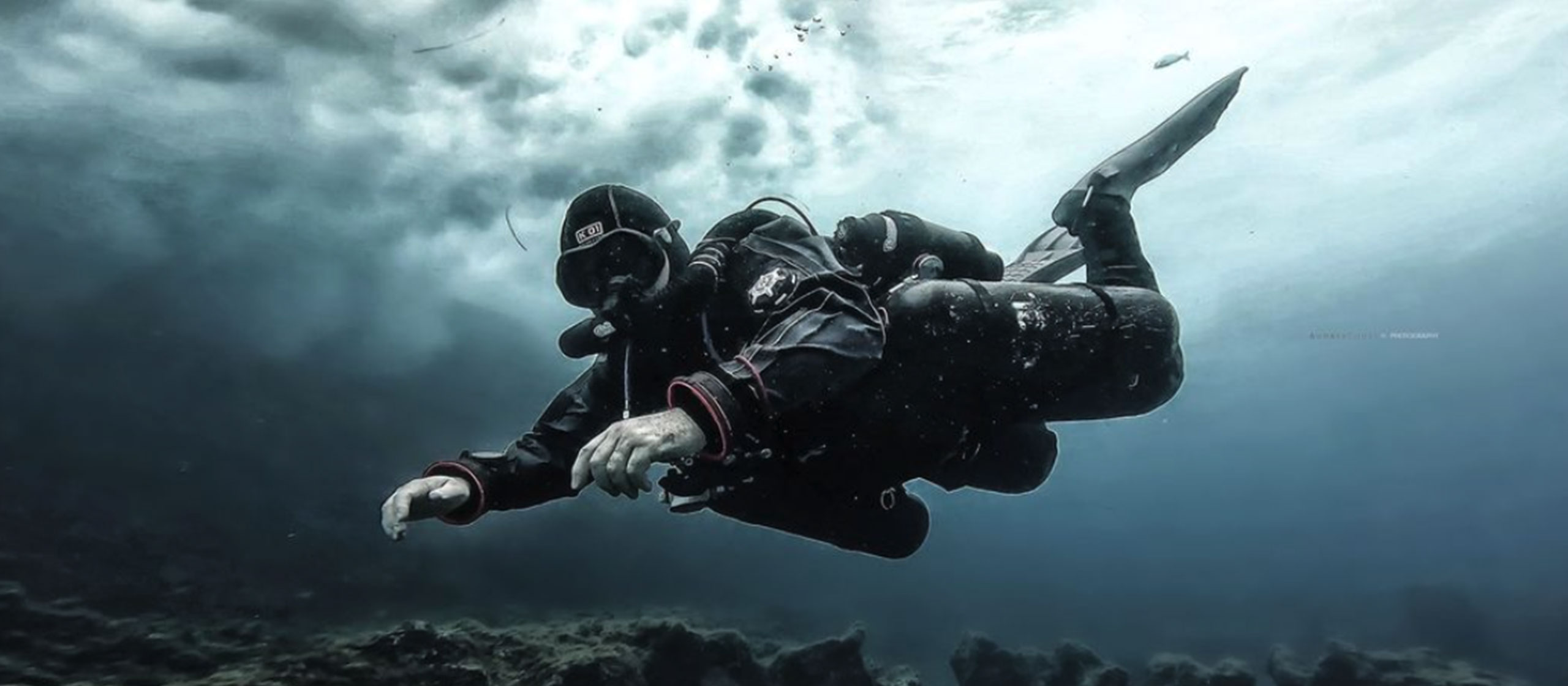Features
Into the wild: diving beyond one’s limits
Wisdom: How was the dive then? First dive since you finished your open water course, must have been pretty exciting, right?
Foolishness: Oh Man… The wreck and its engine room down the stairs… That was just epic!
Wisdom: I thought there were only deep wrecks there? And I mean, how did you end up venturing inside?!?
Foolishness: Yeah you know, pretty unexpected! I was just following the guide. Ok, the viz turned really bad at some point and I got entangled in some cables so I was freaking out a bit cause I was getting low on gas… 120 feet man, it sucks one’s gas so fast! Had no idea. Anyway, thank god, there was this guy whose light beam turned up out of nowhere. He freed and saved me somehow and I made it out, not sure how…’
Wisdom: Oh my god! Where was your guide and the other divers then?
Foolishness: No man, it was just me and him. I paid extra to get the VIP tour! Anyway I bumped into him on the upper deck. Just on time to share gas with me! Lol!
Wisdom: Are you simply mad or just out of your mind?
Foolishness: Oh come on… don’t be vanilla man! Hey did you know there is also a cool cave there …?!
Looking back at the highlights of our diving journey, most of us surfaced at least once with this line of self-questioning: What just happened? What could have happened? What should I have done?
Thankfully, if we made it back to the surface to raise such questions, there were no casualties. At least, not this time. Of course, some people will not question or resist events that take them beyond their actual limits, perhaps out of ignorance or lack of knowledge, perhaps out of pride or wilfulness, or last but not least, simply not wanting to say no.
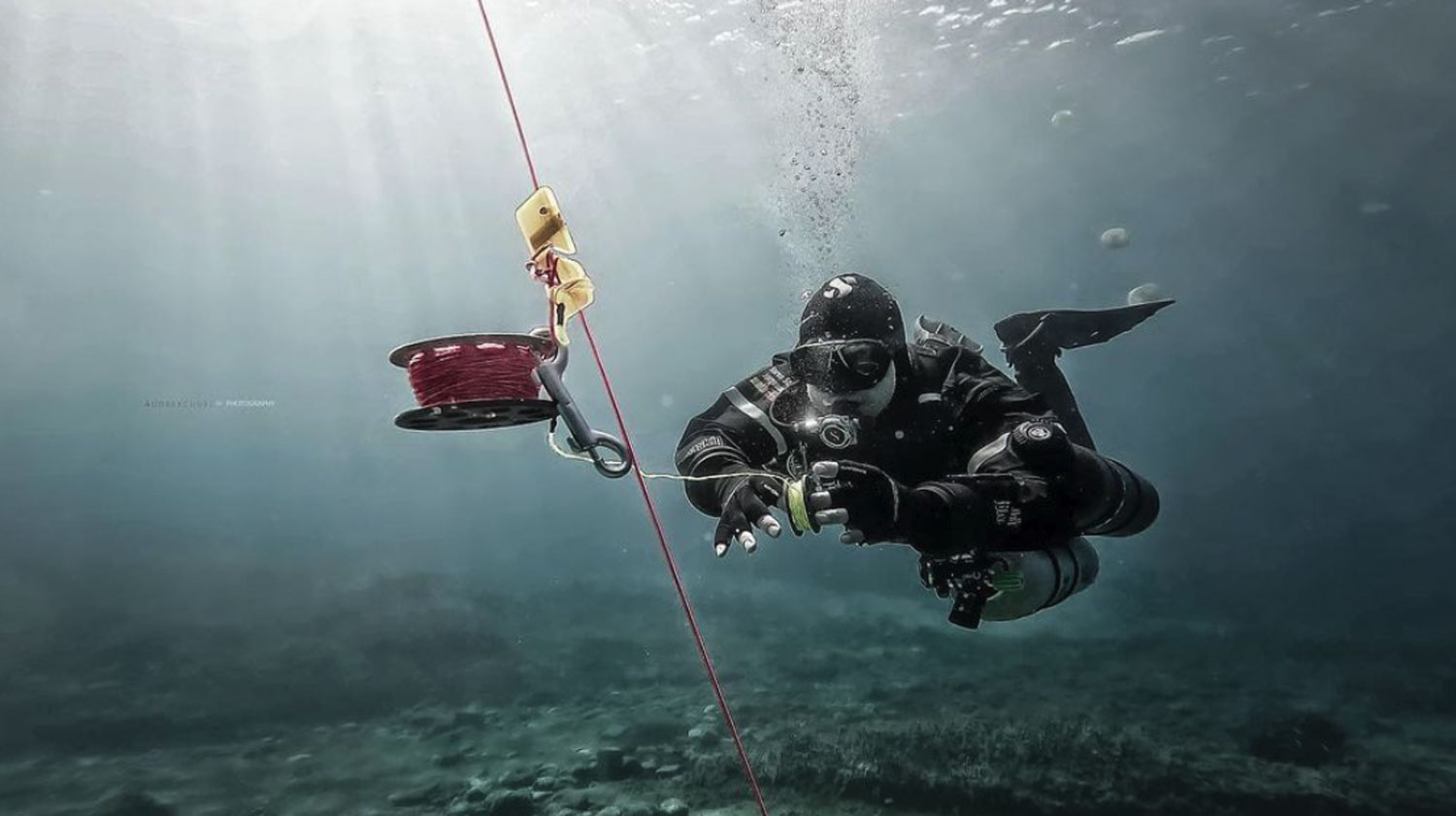
ONE’S LIMITS
A person’s diving limits are conditioned by two major correlated factors: one’s diving certification level, and one’s comfort zone, which are both shaped by training and one’s experience. A certification is not a lifejacket, but when a diver’s comfort zone extends beyond his current credentials, he steps into the wild. In other words, an unknown, thrilling danger zone.
Diving education is at least partially built on accidents analysis. As such, it aims at providing one with a cognitive protocol—a series of actions to be taken in response to potential problems that might arise during a dive. It’s a proven process that empowers divers with problem-solving skills. It also outlines the specific equipment required to support such activity.
None of us qualifies as a race car driver when we receive our driving license. We simply attended a minimum number of training hours to guarantee that we won’t endanger ourselves or the others when hitting the road, and hopefully we won’t hit the tree either. Same goes during diving training and the subsequent issuance of a certification card. Its significance is none, but the variety of ‘specialties’ one can rightfully earn include depth, decompression, overhead environments, or cold water to name a few.
Dive training provides a comfort zone within the certification limits. Practice helps establish and define our own personal psychological and physical limits within this frame. Some divers will come to understand that the activity is not really their thing, and give up. There is nothing wrong with that, quite the opposite actually. Others will proceed with baby steps and maximise their experience along the way, before aiming for the next level. The unfortunates are those who fall in between these two approaches, and venture into the wild willingly. Only by identifying our limitations can we stretch ourselves and redefine the contours of what’s possible.
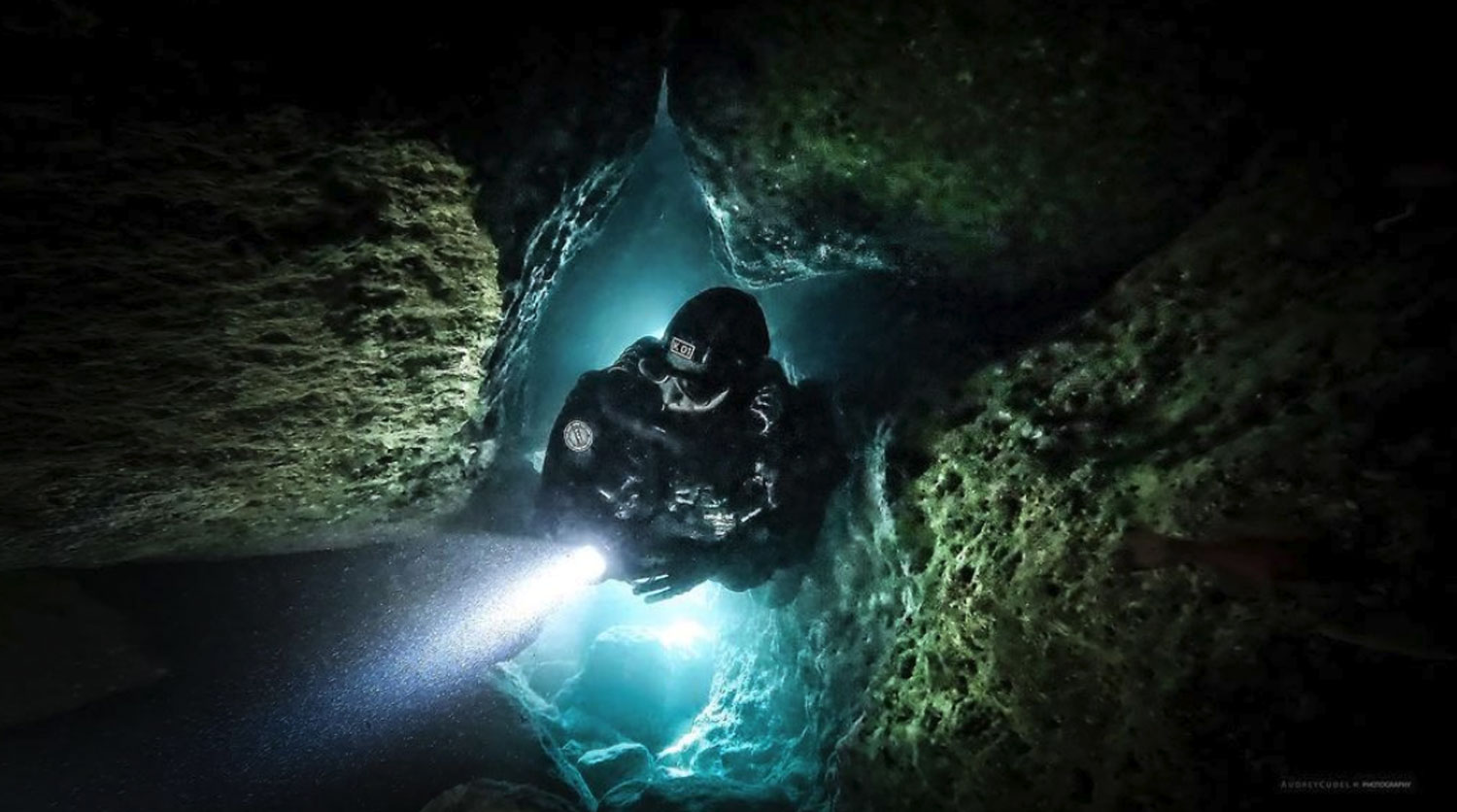
THE LAST TEMPTATION OF DIVERS
A diver who intentionally steps beyond his or her limits is either following a quest for an imaginary diving grail while disregarding the value of their training, or following the mentorship of a guide or instructor whose supposed wisdom and experience will ensure them immortality.
In other words, being tempted by the forbidden is part of human nature, and the intrepid venture into the wild sometimes, with and sometimes without, the external influence of a guide or buddy. Motivations are commonly either intrinsic such as curiosity, ego or extrinsic when driven by peer pressure, the shame to say no and to look like a ‘loser’. No matter the motivation, there is still a degree of awareness alerting the diver about the fact he simply should not be right here, right now. This awareness is somehow productive for some and a source of more cautiousness mitigating partly the risks involved. On the contrary, for others, the increased degree of stress turns potential risks into actual events.
A diver who unintentionally goes beyond their limits ignores their very existence by definition, whether by lack of education or stupidity. The ignorance extends to the content of the liability release document, unread and signed blindly on arrival at a diving facility. It involves the acknowledgement of a renewed diving insurance card which does not guarantee the outcome but might help with consequences shall one make it back. The ignorance also extends to the guide’s concern about who’s who in the group certification-wise, and the associated peer pressure to push the limits of some divers to satisfy others, particularly when there’s a tip involved. After all in the end, “divers just want to have fun!”
Dive centers are often in charge of the whole guided group organization process. Business being business, it is often convenient to assign a mixed experienced group of divers to a guide whose job is to please customers, but most of all please the dive center in order to keep his job. On the downside, it is a highly risky process for all parties involved. On the upside, the ignorance of the risks at stake and the acceptance of the guided group frees most divers from questioning or contextual fear. The total absence of awareness about what is going on arguably only has the only advantage— not to create additional stress assuming nothing goes wrong.
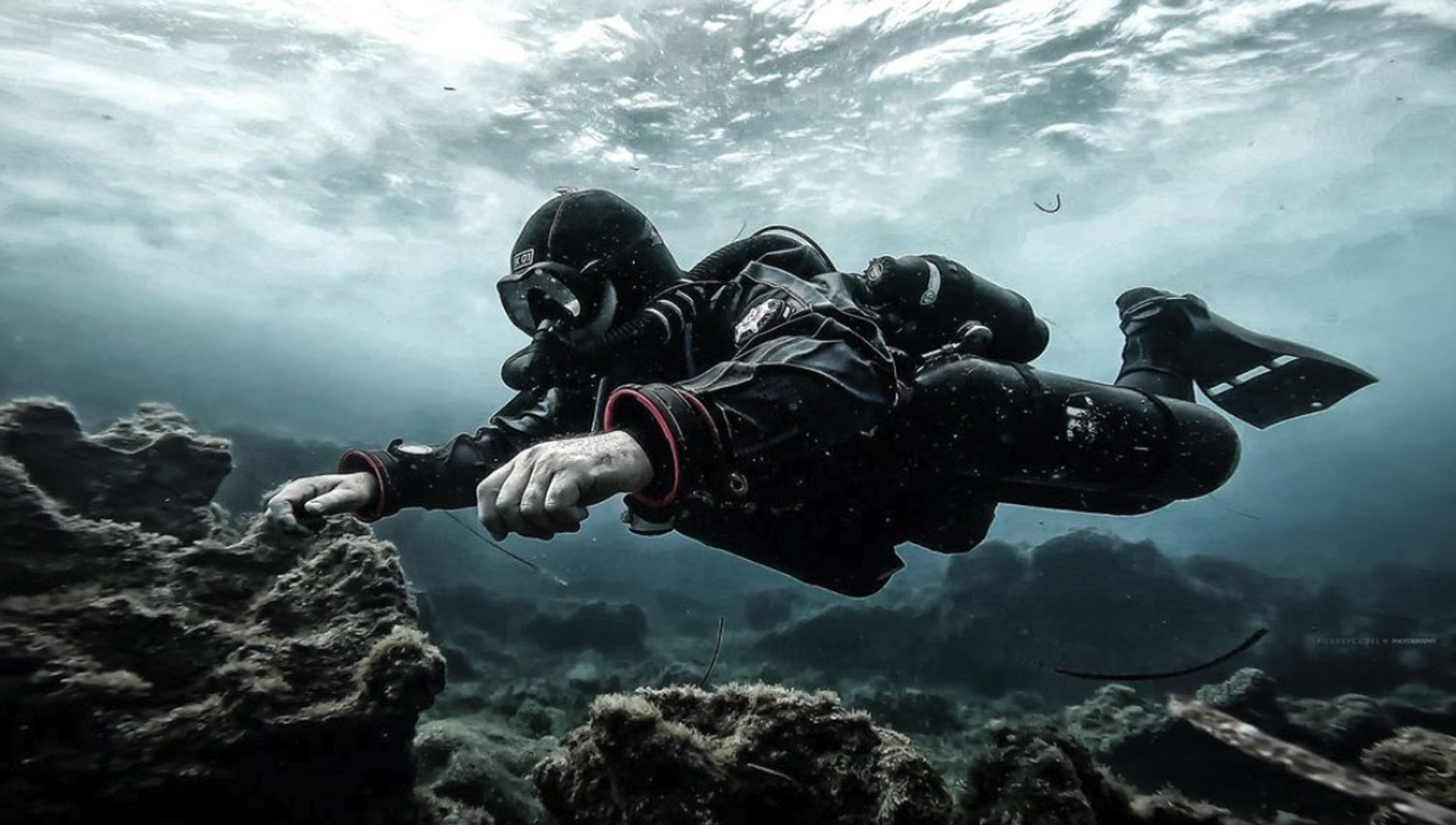
WHO SOWS THE WIND…
Attitude plays a large role in a diver’s journey. Part of it is understanding, analyzing and having the honesty to acknowledge the dive did not happen as it should have no matter the consequences. It takes some guts to open a constructive discussion with a guide or a buddy, and with oneself when one feels that, even if he made it back today, the dive was simply not ‘Okay’.
Some say better safe than sorry but why not add, better sorry than doing it all over again, and again. Yes, this little wreck looked harmless from the outside. Yes, the depth digits on the computers become some diver’s holy grail. And yes, this cave was simply stunning. As much as all of this might be true, what is their value when things turn wrong, and one realises he was simply not prepared for it, for his own safety or his team’s safety. A scientist of E=MC2 fame once proposed, “Once we accept our limits, we go beyond them.”
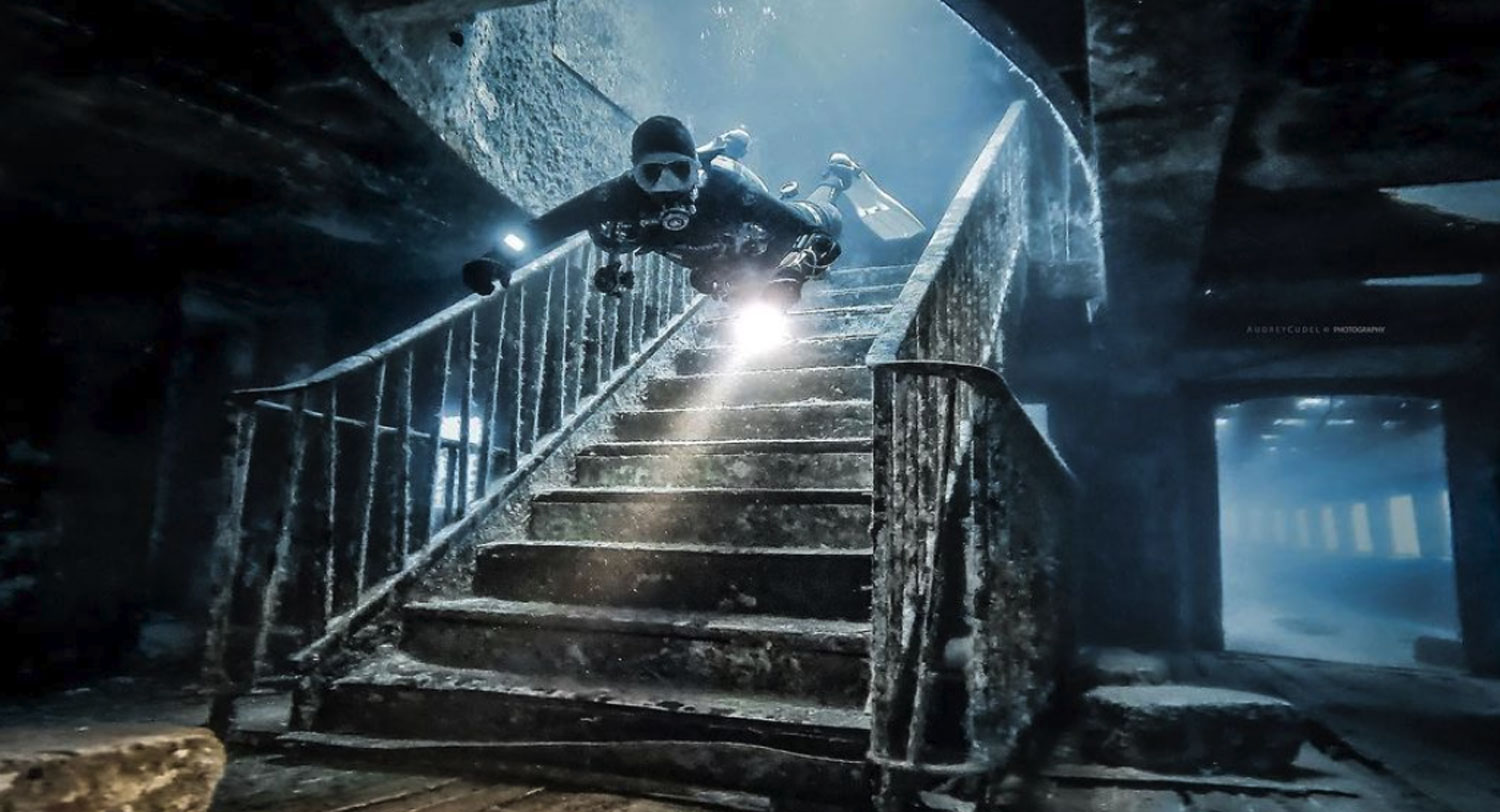
Wisdom: ‘How was the dive then? First dive since you finished your Open Water, must have been pretty exciting right?’
Awareness: ‘Man, I feel so stupid. Had no idea what I was stepping into. The guide mentioned a wreck and an engine room prior to the dive but in my mind the whole picture looked different. I knew it was beyond my depth limit but nobody really seemed to care and I heard this wreck is epic… You know I just wanted to see it really…’
Wisdom: ‘What happened then?’
Awareness: ‘I was following the guide but then he went inside and I did not know what to do. So I just followed but the viz turned really bad at some point and I got entangled in some cables so I started freaking out. I was getting really low on gas and there was this NDL (no decompression limit) warning blinking RED on my computer! Had no idea what to do. All of a sudden there was this guy whose light beam turned up out of nowhere, he freed me somehow and I made it out, not sure how …’
Wisdom: ‘Oh my god ! Where was your guide and the others then?’
Awareness: ‘It was just me and him that day. I paid extra hoping to get a more private tour. I met him just before I ran out of gas… ’
Wisdom: ‘OMG !! It was a close call!?’
Awareness: ‘And you know what, he offered to go into this cave for the second dive… Of course, I mean it felt tempting in the morning but then I just called it for the day…
Wisdom: ‘What did he say?’
Awareness: ‘Nothing really, he went back to the wreck with a group in the afternoon. Am not sure diving is for me in the end.’
Wisdom: ‘This had nothing to do with diving to me… Maybe you should reconsider what you aimed for originally. Take it slow, and seek proper training in the end if that’s really what you’re into. And remember, your gut always remains your best guide. I’m glad you made it back buddy!’
About the author
Audrey Cudel is a cave explorer and technical diving instructor trainer specializing in sidemount and cave diving training in Europe and Mexico.
She is also renowned in the industry for her underwater photography portraying deep technical divers and cave divers. Her work has appeared in various magazines such as Wetnotes, Octopus, Plongeur International, Perfect Diver, Times of Malta, and SDI/TDI and DAN (Divers Alert Network) publications.

